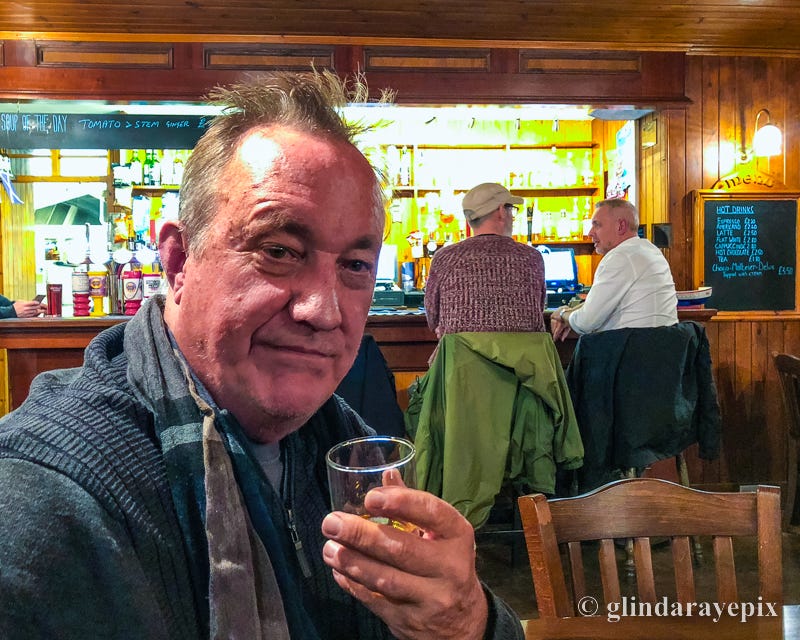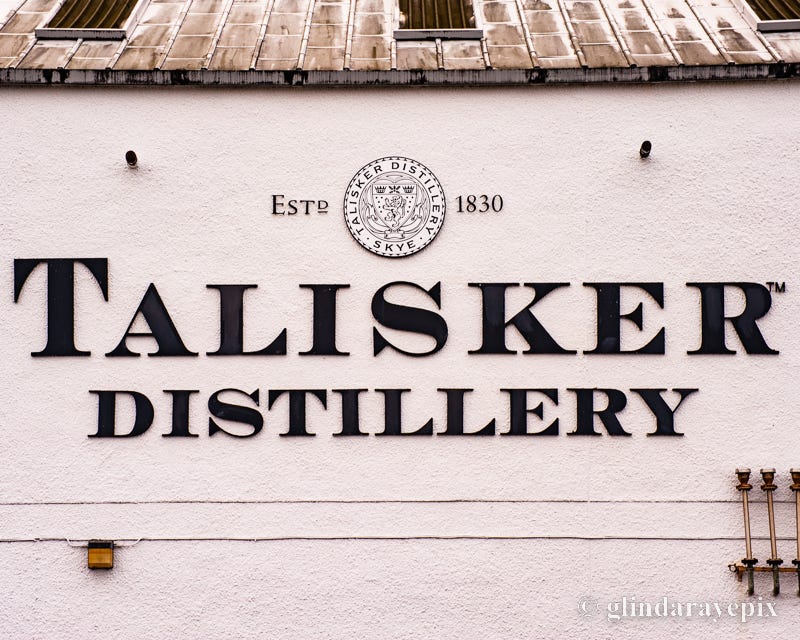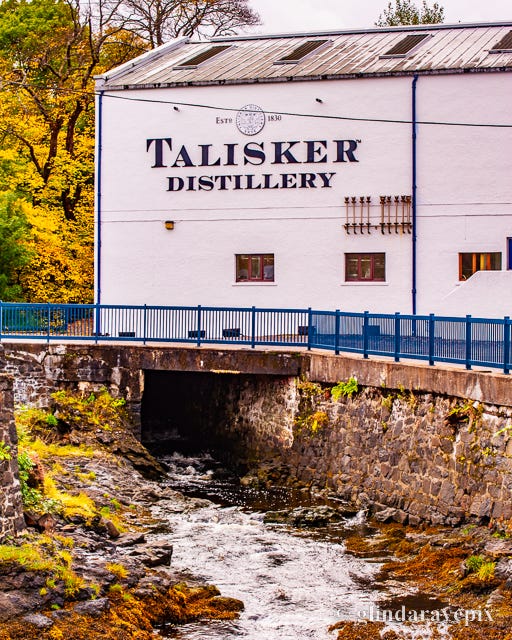Heading out to sunny California in the morning, where the United States and the State of California breathlessly await our opinion (and yours too!). It’s been a long, crazy trip, where Covid and travel thoroughly disrupted our publishing/communications schedule. A week of jet lag and other excuses, then we’ll finally be getting back to normal. Thanks for subscribing anyway and for your patience along the way. As for this week’s missive… With cold weather approaching, it seemed like as good a time as any for a wander back into the Scottish family roots.
Before we settle down to a wee dram of Talisker 18-year, peat-smoked, oak-matured, distilled and unfiltered, single-malt Scotch whisky, a handful of definitions are in order:
Whisky
A spirit made from grain (as opposed to grapes for brandy or potatoes for most vodkas). The feedstock for a whisky distillery is in fact a low-alcohol beer (mash), while the feedstock for a brandy operation is a dense wine. Any grain will do for whisky, but the queen of Scotch cereals is barley, with wheat and rye as her handmaidens.
Scotch
All kinds of legal requirements here. Made in Scotland, of course, and aged at least three years, using no additives beyond grain, yeast, caramel coloring, and the finest Scottish water. From 40% to 94.8% alcohol, although most whiskies max out at either 68% (the strength in the cask) or a diluted 46% (you can actually drink a lot of the real thing without losing your mind). The only whisky legally produced in Scotland is—you guessed it—Scotch.
Malt
Barley is soaked and then dried to start and stop germination. This converts the starches into sugars, which the yeast feeds on to produce fermentation and alcohol. Traditionally, the grains were spread out a foot deep on a special Malting Floor that allowed air and smoke to percolate through and flavor the resulting mash. You can still find a few of these floors in operation.
Single Malt
All Scotch is processed in batches in copper pot stills, as opposed to continuous (column) stills, which are illegal in Scotland. "Single" means that the whisky in your bottle comes from a single batch. Blended whiskies can come from a blend of batches and might or might not include grains other than barley. Trust the label—in Scotland, they canna tell a lie (about Scotch anyway).
Peat-smoked
Peat is a strange material, created when vegetation piles up over millennia without adequate drainage to dry it out. It is cut in fireplace-sized bricks out of bogs all over Scotland and Ireland. There was a time when the smell of burning peat was as pervasive in the Highlands as the eternal mists from the latest rainstorm. Today, few people heat their houses with the material, but it is still burned in the malting process for its smoky flavor. Highland Scotches tend to reek of peat, compared to their less pungent Lowland cousins. Try a dram of Laphroaig, if you want to know what peat tastes like.
Distilled
One of those processes that makes you wonder how the ancients came to invent the tools and foods of the modern world. Alcohol evaporates at a lower temperature than water, so when you boil a mixture of the two and draw off the steam, the percentage of alcohol in the finished product rises. Most Scotch is distilled twice.
Unfiltered
Lowlanders from the East sometimes cold-filter their final product, whereas Highlanders generally prefer the unfiltered original. It might build strength and obstinacy, but we're less sure about wisdom.
Oak-Matured
All Scotch, blended or unblended, is stored and matured in white oak casks that have been fired for flavor. Casks are re-used—an occasional treat can even be found in whiskies finished in used port, sherry, or (our favorite) rum casks.
18-Year
The age refers to the youngest whisky in the bottle and is strictly enforced. That means this whisky has been growing and maturing for longer than someone's children. In Scotland, we’ve found that you pay somewhere around a dollar per year for a single serving. In America, we’ve seen it as low as ten dollars per year of aging.
Talisker
Both distillers and bottlers name their whiskies. Talisker, founded in 1830 by Ben’s family, the McCaskills, and located at Lat 57 17'.9N, Long 06 21'.5W (according to their label), is the largest distiller on the Isle of Skye. This qualifies them as a Highland Scotch. In the Eastern Lowlands, Scotch is a big business, with slick, massive operations to feed the worldwide export market. The Highlands are as wide-ranging, eccentric, and individualized in their approach as any French or Italian wine-growing region.
Dram
An ancient apothecary measure, the drachm, derived its name from the Greek and then gave the Scots this synonym for a small drink—the word "small" being up to liberal interpretation by your always friendly and helpful Scottish bartender.
Wee
A Scottish word for "small" that sounds like a touristy cliché—except that everyone seems to use it without a hint of self-consciousness.

And now, finally! Time to shut up and get on with the tippling...










Do the "Experts" (locals) ever use ice or just a wee dram in a clean glass?